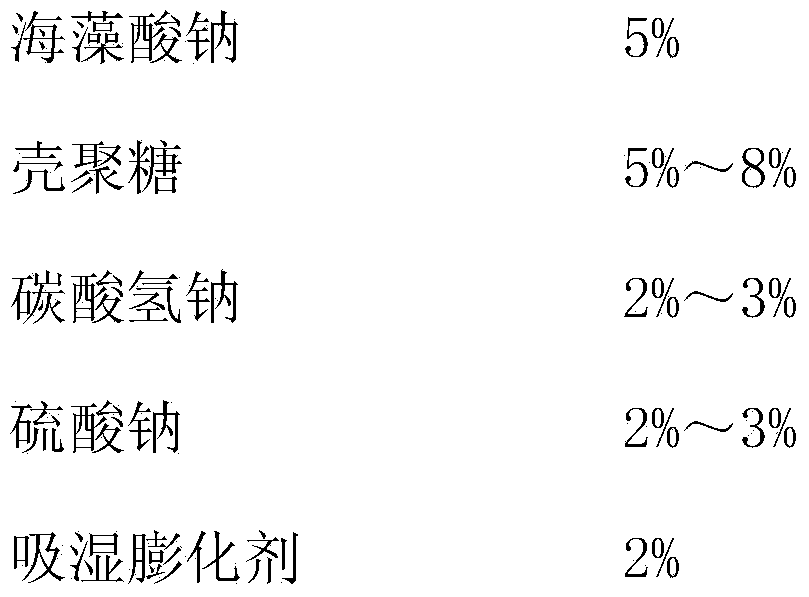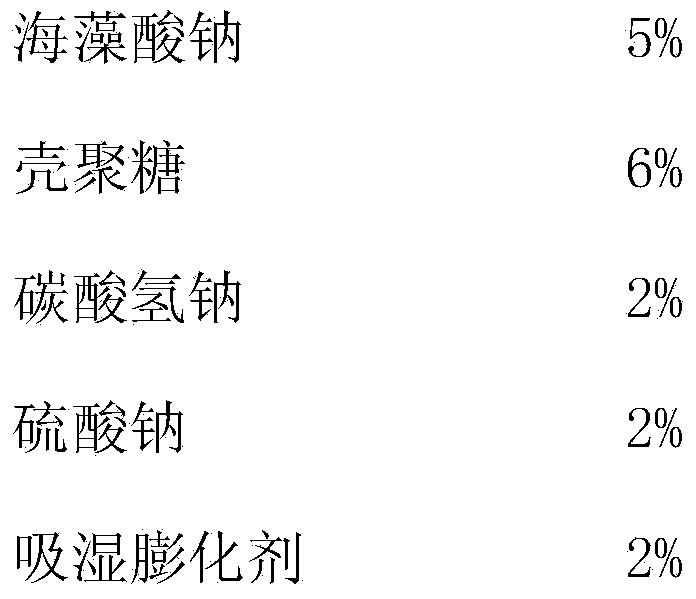Environment-friendly silk printing method
A pure silk and environmentally friendly technology, applied in dyeing, biochemical fiber treatment, textiles and papermaking, etc., to achieve the effect of bright printing colors, less energy consumption, and good K/S value
- Summary
- Abstract
- Description
- Claims
- Application Information
AI Technical Summary
Problems solved by technology
Method used
Image
Examples
Embodiment 1
[0031] (1) Fabric enzyme pretreatment: Put the degummed and tentered silk fabric into the enzyme solution for pretreatment. The enzyme treatment process conditions are: papain 15U / mL, cellulase 3U / mL, pH7, temperature 40°C, time 1h, liquor ratio 1:10, wash with water and air dry after treatment;
[0032] (2) Sizing: the real silk fabric after enzyme pretreatment is sizing on one side on a sizing machine, and its size is composed as follows by weight percentage:
[0033]
[0034] The remainder is water;
[0035] The hygroscopic swelling agent is that the mass ratio of urea to triethylene glycol is 3:7
[0036] (3) Drying: Infrared drying equipment is used, the drying temperature is 100°C, and the drying time is 5 minutes;
[0037] (4) Making documents: the above-mentioned jet printing is generated by the color card software, the printing conditions are: printing precision 360×2160dpi, 360×2160 6pass CMYK, the ink used for jet printing is regenerative reactive dye ink;
[...
Embodiment 2
[0050] (1) Fabric enzyme pretreatment: Put the degummed and tentered silk fabric into the enzyme solution for pretreatment. The enzyme treatment process conditions are: papain 16U / mL, cellulase 4U / mL, pH7, temperature 40°C, time 1h, liquor ratio 1:10, wash with water and air dry after treatment;
[0051] (2) Sizing: the real silk fabric after enzyme pretreatment is sizing on one side on a sizing machine, and its size is composed as follows by weight percentage:
[0052]
[0053] The remainder is water;
[0054] The hygroscopic swelling agent is that the mass ratio of urea to triethylene glycol is 2:8
[0055] (3) Drying: Infrared drying equipment is used, the drying temperature is 100°C, and the drying time is 5 minutes;
[0056] (4) Making documents: the above-mentioned jet printing is generated by the color card software, the printing conditions are: printing precision 360×2160dpi, 360×2160 6pass CMYK, the ink used for jet printing is regenerative reactive dye ink;
[...
Embodiment 3
[0069] (1) Fabric enzyme pretreatment: Put the degummed and tentered silk fabric into the enzyme solution for pretreatment. The enzyme treatment process conditions are: papain 17U / mL, cellulase 5U / mL, pH7, temperature 40°C, time 1h, liquor ratio 1:10, wash with water and air dry after treatment;
[0070] (2) Sizing: the real silk fabric after enzyme pretreatment is sizing on one side on a sizing machine, and its size is composed as follows by weight percentage:
[0071]
[0072] The remainder is water;
[0073] The hygroscopic swelling agent is that the mass ratio of urea to triethylene glycol is 4:6
[0074] (3) Drying: Infrared drying equipment is used, the drying temperature is 100°C, and the drying time is 5 minutes;
[0075] (4) Making documents: the above-mentioned jet printing is generated by the color card software, the printing conditions are: printing precision 360×2160dpi, 360×2160 6pass CMYK, the ink used for jet printing is regenerative reactive dye ink;
[...
PUM
 Login to View More
Login to View More Abstract
Description
Claims
Application Information
 Login to View More
Login to View More - R&D
- Intellectual Property
- Life Sciences
- Materials
- Tech Scout
- Unparalleled Data Quality
- Higher Quality Content
- 60% Fewer Hallucinations
Browse by: Latest US Patents, China's latest patents, Technical Efficacy Thesaurus, Application Domain, Technology Topic, Popular Technical Reports.
© 2025 PatSnap. All rights reserved.Legal|Privacy policy|Modern Slavery Act Transparency Statement|Sitemap|About US| Contact US: help@patsnap.com



